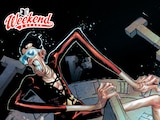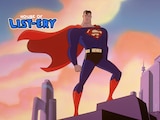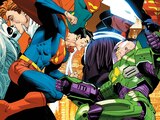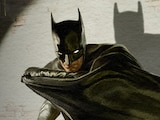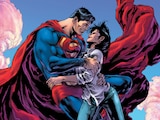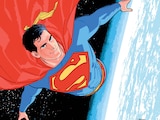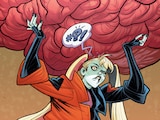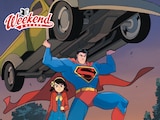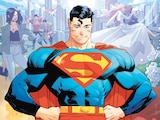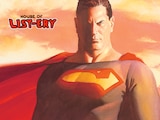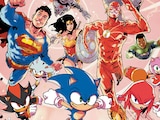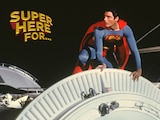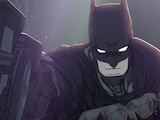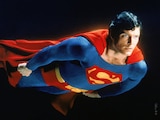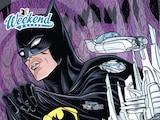In the Modern Age of Comic Book Fandom, social media platforms and online connectivity have brought together—and brought to light—readers who may not fit the traditional image of a fan as it existed throughout most of the 20th century. But comic books were and have always been for everyone, and as the industry has developed, more and more readers have emerged that both enjoy superheroes while simultaneously yearn for characters who look like them. In particular, Black women have suffered a lack of proper representation, either through caricature or plain absence. Yet in the last few decades, we’ve seen some stand out stories starring the few Black heroines existing in the genre, and they’re all at DC.
Characters like Vixen, Starlight and Thunder have had their various media appearances in live action and animation, but what about the source material which inspired their use to begin with? Where can you find the best? Here’s what we suggest for five of DC’s most remarkable Black heroines.
Natasha Irons a.k.a. Starlight

Storyline: 2006-2007’s 52
Natasha first appeared in the pages of Steel, where she regularly involved herself in the adventures of her Uncle John Henry Irons. In Action Comics #806, Natasha gains access to the Steel armor and comes to Superman’s aid when he’s injured by magic ninjas. After that, she aided her uncle for a time, but at the beginning of the weekly series 52, Steel found her youthful exuberance surrounding hero work unbecoming of someone worthy of the role. He took back Natasha’s armor and told her to work at becoming a costumed crimefighter on her own.
Furious, Natasha soon fell in with Lex Luthor, who was creating his own team of super-powered heroes to replace the then-missing Superman. Imbued with super strength, flight and hard-light energy, Natasha became Starlight and founded a new incarnation of Infinity Inc. under Luthor’s dollar.

Convinced that Luthor was up to no good, Steel pleaded with Natasha to reject Luthor’s created abilities, but it wasn’t until the death of her teammate Trajectory that Natasha began investigating Metropolis’ richest man and uncovered a conspiracy that threatened to destroy the city.
52 was a fifty-two issue weekly series covering the exploits of multiple heroes, and Steel and Natasha were only two of the many featured. It’s a great showing of the pair, but especially Natasha, who experiences difficulties in trust and loss while reaffirming her right to fight by her uncle’s side, with or without powers and armor.
Vixen

Storyline: 2008’s Vixen: Return of the Lion
When African model Mari Jiwe McCabe first appeared in the pages of Action Comics, it wasn’t long before she began fighting alongside other super-powered individuals such as the Justice League and Suicide Squad. For years, she was paired off with similarly-themed characters such as Animal Man and Bronze Tiger, seldom having time to contemplate her own life’s meaning. It’s not until the five-issue miniseries Vixen: Return of the Lion that we see a conflicted young woman wrestling with her past as an orphan of Africa and her present as a superhero.
When the Justice League uncovers evidence that her mother’s killer is still at large in her birth country of Zambesi, Mari returns to her hometown with far more power, but even less confidence in her own identity. What does she represent to the people of Zambesi? Are her interests of justice personal, or do they serve another nation’s?

Vixen: Return of the Lion gets into Mari’s head in a way never ventured, with African folklore and mythology embedded in each issue. Mari’s connection to the animal kingdom—both relating to her powers of inhabiting animalistic abilities and tying her to cultural heritage—is explored repeatedly throughout the series. Return of the Lion is a strong deep-dive into a hero who has been everywhere in the DC Universe, but is least familiar with herself, confronting the fear that seizes someone when they’re unsure of their very identity.
Thunder

Storyline: 2021’s The Other History of the DC Universe #5
The daughter of Black Lightning, Anissa Pierce made a promise to her father that upon graduating college, she would use her inherited electric superpowers to fight crime. That promise was kept the night of her graduation, and soon after, she joined with the newest incarnation of her father’s old group, the Outsiders. Of course, things would only get more complicated from then on, and Anissa suffered near-death experiences, heartache, love and loss throughout her time on the team. These events can be found across the two Outsiders titles, but to specifically get into her head, one need look no further than the recent The Other History of the DC Universe #5, which features Anissa’s perspective on her life and career.
The Other History of the DC Universe hones in on the intersectionality of Anissa’s identity as a woman, Black woman and eventually, a queer woman. With a superhero for a father, Anissa had troubled understandings of both superheroes and the police. Her father, a strict teacher who taught respectability politics, lived as both an ideal to strive for and a cautionary example to avoid when operating as a Black hero in public. Working with the government on the Outsiders caused its share of problems, but the personality clashes of several members, specifically Grace Choi, was a source of tension. Yet it was Grace with whom Anissa fell in love.

Of the six characters presented in The Other History of the DC Universe, Anissa Pierce is the youngest, both in character age and creation. Her short but volatile career forced her to grow up in difficult circumstances, but also adds to the examples that make her a compelling and memorable standout in the DC roster of heroes.
Rocket

Storyline: 1994’s Icon #7
In the world of Milestone, Superman’s closest equivalent is the hero known as Icon. Strong, fast and virtually invulnerable, Icon both shares the Man of Steel’s adoration from the public and his extraterrestrial origins. However, that’s where the similarities end, and the differences only serve to challenge the superhero genre in fresh and daring ways. For starters, Icon is not actually the protagonist of his own series. That would be his teenage partner Raquel, a.k.a. Rocket.

Icon wouldn’t be Icon if it weren’t for Raquel. Inspired by seeing the hero take flight during a botched home invasion with her then-boyfriend Noble, Raquel saw an opportunity for the successful attorney Augustus Freeman IV to become an inspiration for the downtrodden in their hometown of Dakota. She came to him with the idea of Icon and Rocket and the two became a costumed crimefighting duo, making their presence known to a grateful Dakota. But the series really found its heart after their first adventure, when Icon’s alien sense informed him that his protégé was pregnant. The news sent Raquel into despair, and in the powerful Icon #7, we see her go from person to person, seeking the answer to her situation.

By the 1990s, there had been hundreds of teenage superheroes in comics, but Rocket is the first one to become pregnant. Her condition and search for a solution was one of the earliest examples of Milestone’s mantra to reflect real-life problems experienced by their readers that weren’t represented by mainstream media.
Rather than serve as a subplot or one-issue cautionary example, Rocket was the book’s main character. Her liberal politics clashed with the alien Icon’s learned Black conservatism, representing the generational divide that exists within the Black community both then and now. She also served as the counterpoint to Milestone’s other teen hero, Static, whose sometimes chauvinistic asides were called out on the carpet by his colleague in the metahuman community.
Rocket took a hiatus from crimefighting to give birth to her son, whom she named Amistad, but she soon suited back up and fought by Icon’s side, never once doubting her mission statement to inspire those needing an inspiration, just as she once did.
Jo Mullein

Storyline: 2019-2021’S Far Sector
Helmed by award-winning sci-fi author N.K. Jemisin and illustrated by Jamal Campbell, Far Sector is a twelve-issue murder mystery that features Sojourner “Jo” Mullein, a newly appointed Green Lantern who represents both new hopes and new difficulties in guarding the Universe. The onset of our story sees Jo, given one year to make a difference with her unique power ring by the Guardians of Oa, investigating a murder which has taken place at City Enduring, a sector of the universe which hasn’t had violence occur in 500 years.
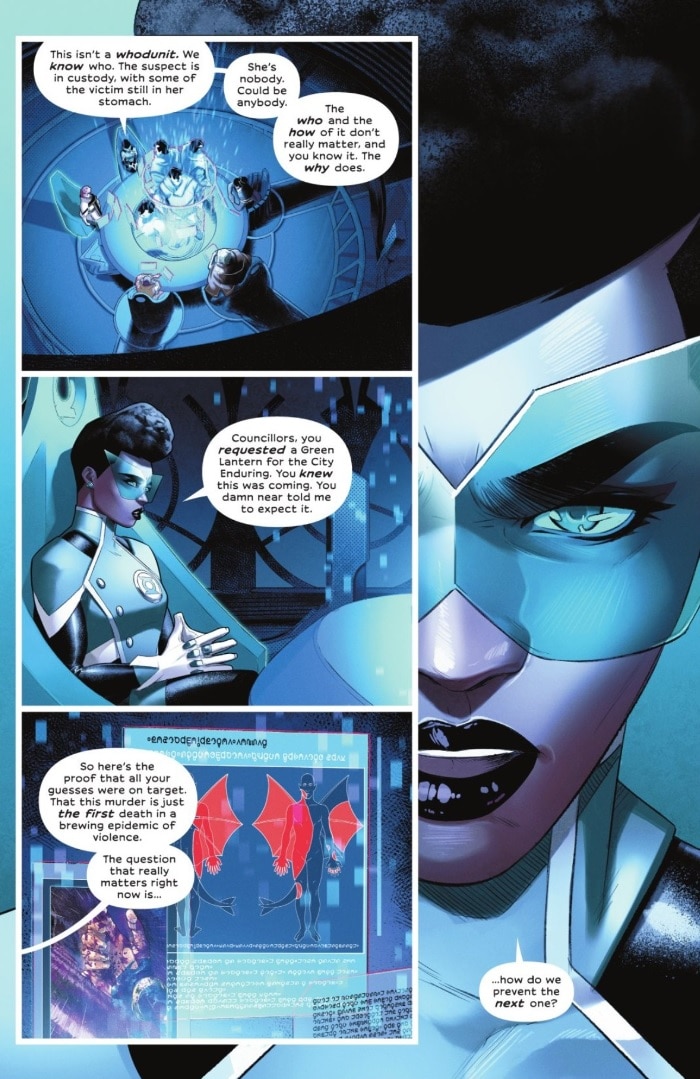
Far Sector is a story embedded with Black influence. From the very name of our hero, taken after Sojourner Truth, the opening monologue sees Jo quoting a passage from Chinua Achebe’s Things Fall Apart, an essential text in African literature. Jo’s hairstyle and unisex Green Lantern design is very obviously taken after the androgynous aesthetic of Janelle Monae, a Black artist who specializes in Afro-Futurism. Jo’s origin, a former policewoman who left when the system she was working to correct turned against her, speaks to an intersectionality reminiscent of Vixen and Thunder—conflicting identities merging from humble origins and hero narratives. Jo feels alienated by the emotionless City Enduring, whose citizens take a chemical to suppress emotional expressions. Pressures of institution, culture and duty abound for this new hero, who is charged with doing the impossible in the face of increasingly impossible odds. The series, which finished in 2021, was nominated for Best Limited Series at the 2021 Eisner Awards.
Looking to dive deeper? All five of the storylines discussion are available to read on DC UNIVERSE INFINITE.
Donovan Morgan Grant writes about comics, graphic novels and superhero history for DCComics.com. Follow him on Twitter at @donoDMG1.
NOTE: The views and opinions expressed in this feature are solely those of Donovan Morgan Grant and do not necessarily reflect those of DC Entertainment or Warner Bros.

